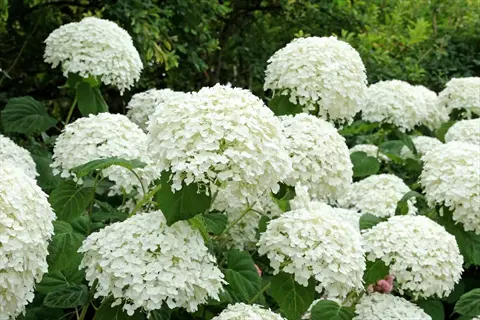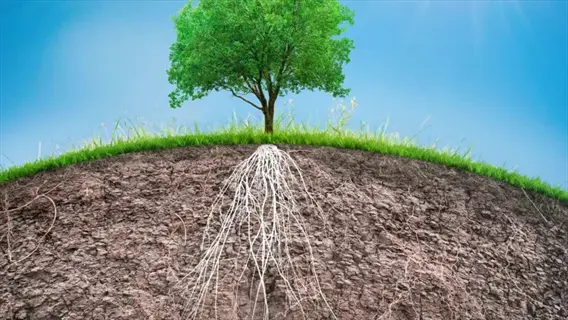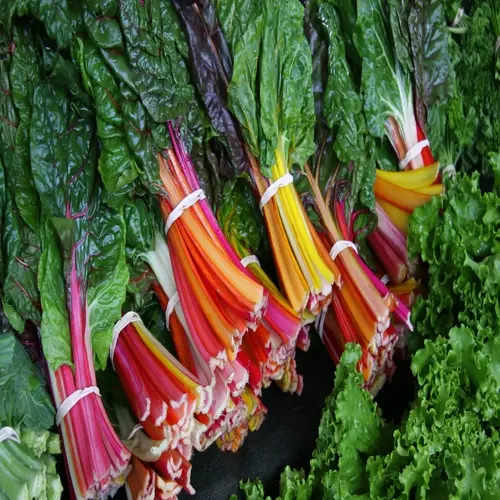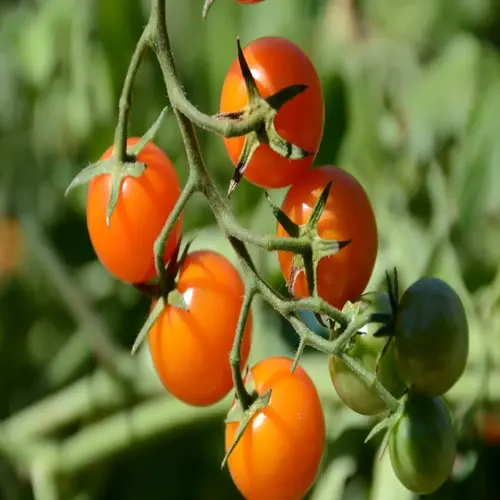How to Improve Clay Soil: Essential Steps

Written by
Paul Reynolds
Reviewed by
Prof. Martin Thorne, Ph.D.Discover ways to enhance clay soil by adding organic matter each year to enhance soil structure.
Always check soil moisture before working clay soil to prevent permanent compaction damage.
Select clay tolerant plants such as broccoli and daylilies which will grow well in heavy soils.
Utilize the no-dig method with compost layers to preserve soil structure long term.
Plant cover crops, preferably clover, which can naturally break up compact clay subsoil.
Be patient with amendments to the soil as it may take multiple years instead of one.
Article Navigation
If you're asking yourself how to improve clay soil, rest assured, you're not on your own. There is a lot that gardeners have to figure out, such as the very sticky mud that turns into glazed, baked mud by the summer. I remember the first year I planted tomato plants, and they actually drowned in a waterlogged clay bed after soaking up the spring rains; my sympathies for climbing out of the mud and dealing with cracked earth.
Clay soil can be tricky, but it has untapped potential. It retains nutrients better than sandy soils and withstands droughts. That compacted material can also be rich in nutrients. With the right skills, you can unlock its untapped potential to produce thriving gardens filled with healthy plants.
The solution is to add organic matter, such as compost, continually. Careful drainage practices and selecting clay-tolerant plants make a difference. Over three seasons, my garden transformed from a straight clay landscape to a productive soil. With a little patience, you too can convert a difficult clay soil into productive soil.
Plant Selection for Clay
Selecting the right vegetables enables you to achieve great success in gardening on heavy clay soils. Broccoli and cabbage do very well in these soils because the root system is powerful and pushes through tighter soils. Carrots and potatoes are not viable options in heavy soils. With a match in your crop and soil abilities, your harvest will be even better.
Flowers greatly enhance clay gardens. Daylilies and black-eyed Susans do well in wet feet and hard ground. Local natives such as purple coneflowers fare well in a native garden. Their deep roots alleviate compaction naturally and provide seasonal color.
Trees serve as a stronghold for clayey landscapes. Oak and river birch are known for their deep root systems that help to hold soil structure. Use them in areas where water sits. I have seen willows help remove excess water in my low-lying corners of my garden.
When selecting plants, prioritize those with fibrous or taproots that are well-suited to clay. Steer clear of hybrids that have less adaptability to clay, which can drown in the rains, as shallow plants often do. By making the most informed planting choices, this minimizes the need to amend the soil regularly, creating established, self-sustaining, and resilient gardens year after year.

Vegetables
- Broccoli develops extensive root systems penetrating 18-24 inches (45-60 cm) deep, accessing nutrients below compacted clay layers
- Cabbage varieties form firm, dense heads during cool seasons while thriving in moisture-retentive clay environments
- Bush beans establish shallow but wide-spreading root networks within clay's top 12 inches (30 cm) efficiently
- Potatoes gradually break up dense clay formations as tubers expand underground through natural growth cycles
- Swiss chard tolerates poor drainage conditions commonly found in unamended clay gardens throughout summer months
- Kale thrives in nutrient-rich clay soils with alkaline pH levels reaching up to 7.5 consistently

Flowers
- Daylilies spread through vigorous rhizomes that gradually penetrate heavy clay soils over multiple growing seasons
- Asters bloom profusely in late summer, benefiting from clay's natural moisture retention during dry periods
- Black-eyed Susans establish deep taproots that access vital nutrients below compacted clay layers effectively
- Bee balm attracts essential pollinators while tolerating slow-draining properties inherent in dense clay conditions
- Coneflowers develop significant drought resistance once established in amended clay beds after initial growth
- Sedums store substantial water reserves in fleshy leaves during clay's periodic dry compaction phases

Trees
- Birch trees absorb excess moisture efficiently through shallow but extensive fibrous root network systems
- Oak species develop strong anchoring taproots penetrating 3-5 feet (0.9-1.5 m) deep into clay substrates
- Hawthorns produce abundant spring blossoms even in alkaline clay conditions common in urban environments
- Willow roots naturally stabilize erosion-prone clay banks near water sources through dense growth patterns
- Maple varieties tolerate seasonal waterlogging challenges frequently occurring in untreated clay landscapes
- Poplar trees grow rapidly in nutrient-dense clay soils with only minimal soil amendment requirements
Common Mistakes to Avoid
Working with wet clay can cause irreversible damage due to loosening of the soil structure. My first experience with this was shoveling rain-soaked soil that didn't stick, almost like concrete. Wait for the soil to have around 40-50% moisture when it breaks down in your hand. You will be thankful for your patience, as it saves your garden from unsalvageable damage!
Adding sand without organic matter creates a concrete-like barrier that chokes roots. My neighbor wrecked his beds like this and had to redo them completely. Always mix sand with at least 30% organic matter, like compost. This makes air space for roots to breathe and allows water to drain.
Untilled soil creates soil habitats and important aggregates. I killed off microbial life in my first garden due to excessive rototilling. Use a fork for mild aeration instead. Implement no-dig methods that protect intact soil layers and earthworm habitats.
When you plant in undecomposed clay directly, it leads to root rot because of poor drainage. You can create pockets amended with compost and plant your seedlings there. I saved my tomatoes with seedlings in heavy clay before. This will provide the seedlings immediate access to nutrients and oxygen while the soil improves around the roots.
Step-by-Step Soil Amendment
Begin soil along late fall or early spring when moisture content is optimum. To test for moisture, place a fistful of soil in your hand and squeeze it. The amount of humidity is right when it falls apart at 40-50%.When preparing a bed, simply clear any weeds and debris with a garden rake. Mark your beds using some stakes and string for accuracy.
Spread organic matter like compost with a depth of 4 to 6 inches over the surface. In the North, use leaf mold, or in the South, you may enjoy grass clippings as a mulch. Always have a digging fork to integrate with the soil and avoid using a tiller, as it can ruin the soil structure.
Incorporate the changes into the top 12 inches using a digging fork at a 45-degree angle. Gently lift and turn the soil, but do not break down aggregates. Work backward to avoid compacting treated areas. Moisture should be optimal during this phase for the best outcome.
Smooth the amended surface with a landscape rake. Water very lightly to settle, without causing erosion. Put straw mulch down to suppress weeds. Allow 2 to 4 weeks for microbial activity before planting. Your patience will enable the establishment of proper soil biology.
Preparation Phase (Late Fall/Early Spring)
- Clear existing weeds and debris using a garden rake when soil is dry
- Perform squeeze test: soil must crumble at 40-50% moisture content
- Define bed boundaries with stakes and string for precise amendment areas
- Gather materials: 4-6 inches (10-15 cm) of compost per 100 sq ft
Organic Matter Application
- Spread 4-6 inch (10-15 cm) layer of compost evenly across surface
- Alternate materials: aged manure (livestock dependent), leaf mold, grass clippings
- Incorporate coffee grounds for nitrogen boost in vegetable beds
- Avoid fresh wood chips which temporarily deplete nitrogen during decomposition
Incorporation Technique
- Use digging fork (not tiller) to work material into top 12 inches (30 cm)
- Maintain 45-degree angle insertion to minimize soil compaction
- Lift and turn sections methodically without pulverizing aggregates
- Work backward to avoid compacting amended areas with foot traffic
Post-Amendment Treatment
- Level surface with landscape rake ensuring even distribution
- Water lightly to settle soil without causing erosion or crusting
- Apply 2-inch (5 cm) straw mulch to prevent weed germination
- Allow 2-4 weeks for microbial activity before planting most crops
Planting Protocol
- Transplant seedlings immediately after final raking for quick establishment
- For seeds: create shallow trenches 1 inch (2.5 cm) deep in amended soil
- Cover seeds with screened compost instead of native clay for better germination
- Install drip irrigation to maintain consistent moisture during establishment
Organic Matter: Core Solution
Organic matter will decay at different rates, which influences how long it may take to build your soil. Fast decomposing organic matter, such as grass clippings, will decompose over a range of months; in contrast, slow organic matter, like leaf mold, can take 1-2 years. I often combine both fast-decomposing and slow-decomposing organic matter, creating a time-delayed, balanced nutrient release for my garden.
Apply materials at the correct depth: Compost should be 3-4" each year per 100 sq ft. Aged manure is a maximum of 2-3" in order to avoid nitrogen burn. Use a garden cart or bucket to measure. Plants can be harmed if you use too much compost! I learned that the hard way from burning my lettuce.
Nutrient profiles vary significantly from source to source. Poultry manure offers a lot of nitrogen, while leaf mold offers trace minerals. Avoid wood chips around vegetables. They will temporarily tie nitrogen up. My tomatoes exploded after switching to composted cow manure.
Seasonal availability dictates material selections. With spring grass clippings, you gain quick nitrogen. I would save fall leaves to make leaf mold down the road. Municipal compost is often ready in the summertime. Unless, like me, you plan for the future by storing fall leaves in wire bins until next year.
Compost
- Well-rotted plant material provides balanced nutrients and improves soil structure
- Apply 3-4 inch (7.5-10 cm) layer annually to maintain humus levels
- Contains beneficial microorganisms that enhance soil biological activity naturally
- Suitable for all seasons except frozen ground conditions
Aged Manure
- Livestock waste decomposed for 6-12 months reduces burn risk to plants
- Apply 2-3 inch (5-7.5 cm) layer; richer in nitrogen than compost
- Source matters: poultry highest in N, cattle balanced, horse weedy
- Requires thorough incorporation to prevent nutrient loss through runoff
Grass Clippings
- Fresh cuttings provide quick nitrogen boost but must be applied thin
- Layer 1 inch (2.5 cm) maximum to prevent matting and odor
- Mix with brown materials like leaves to balance carbon ratio
- Avoid treated lawn clippings containing herbicides harmful to plants
Leaf Mold
- Decomposed leaves over 12-18 months create moisture-retentive humus
- Apply 3 inch (7.5 cm) layer as mulch or soil conditioner
- Lower nutrient value but excellent for improving soil texture
- Oak leaves acidify soil slightly while maple leaves more neutral
Cover Crops
- Living plants turned into soil provide green manure benefits
- Legumes fix atmospheric nitrogen through rhizobium bacteria symbiosis
- Grasses like rye add bulk organic matter suppressing weeds
- Terminate before seed set by mowing or winter kill methods
Cover Crops & No-Dig Approach
Traditional tillage destroys soil structure by smashing aggregates and fungal webs. No-dig methods maintain natural layers through surface composting. I switched after finding compacted soil in my rototilled beds. Pore spaces for roots and water movement will be maintained without disruption.
Terminate cover crops using appropriate methods for each type. Mow legumes like clover at the flowering stage. Roll cereal rye with a crimper. Winter kill oats at 20°F. Avoid herbicides to protect soil life, as I do in my pesticide-free garden.
Time cover crops from planting to cash crops. Plant winter rye 6 weeks before freeze. Terminate 3 weeks before planting in spring. Allow time for breakdown, as I learned that ahead of frost production, tied-up nitrogen resulted. Your timing will release nutrients when the plants need them.
No-dig systems greatly increased moisture retention. My beds retain 40% more water than tilled systems. Cover crop residue can act as a mulch layer, reducing evaporation. Organic matter increases the water-holding capacity. Your plants also survive dry periods much better using this method.
Cover Crop Selection
- Legumes: Crimson clover fixes 70-150 lbs nitrogen per acre annually
- Grasses: Cereal rye grows in temperatures as low as 33°F (1°C)
- Brassicas: Oilseed radish penetrates compacted layers up to 6 feet deep
- Mixtures: Combine vetch and rye for nitrogen fixation and biomass
Planting and Growth
- Sow 6-8 weeks before first frost for winter-hardy varieties
- Broadcast seed at 20-25 lbs/acre or drill at 1/4-1/2 inch depth
- Water lightly if fall drought occurs for germination success
- Allow 60-90 days growth before termination for maximum benefits
Termination Methods
- Mow at flowering stage when stems are succulent for easy decomposition
- Use roller-crimper for large areas to create thick mulch layer
- Winter-kill varieties die naturally at 20°F (-7°C) temperatures
- Avoid herbicides to preserve soil microbial ecosystems
No-Dig Bed Preparation
- Layer cardboard or newspaper to suppress weeds before planting
- Add 4 inch (10 cm) compost layer without disturbing soil structure
- Plant transplants directly through mulch into compost layer
- Maintain permanent paths to prevent soil compaction over time
Moisture Management
- Cover crop residue reduces evaporation by 40-60% in summer months
- No-dig beds absorb 1 inch (2.5 cm) rainfall per hour without runoff
- Maintain soil moisture at 50% capacity for optimal decomposition
- Add supplementary mulch during drought to maintain moisture levels
5 Common Myths
Simply adding sand will permanently fix heavy clay soil drainage issues.
Without organic matter, adding sand creates "concrete" conditions in clay soil. When sand particles mingle with fine clay particles, they create compacted structures that act like a dense and impermeable soil which makes drainage worse and limits root growth. The proven solution requires adding organic matter like compost which binds soil particles into crumbly aggregates while also promoting water infiltration and aeration at the same time.
Gypsum works equally well with all types of compacted clay soils.
Gypsum only helps with sodic soils that contain too much sodium, breaking the sodium bonds and replacing them with calcium ions to remedy structure. In non-sodic clay, gypsum does not improve structure and can create negatively affected calcium-magnesium ratios. Always consider taking a soil test for sodium before using gypsum or other calcium-based amendments, as organic amendments are still the universal answer to an effective solution for improving overall clay soil structure and drainage no matter where it is applied.
Clay soil naturally cannot support a productive garden or healthy plant growth.
Clay soil naturally resists drought while also retaining more nutrients than sandier soils. There are many plants that do very well in clay soils, such as deep rooting shade trees like oak, crops like broccoli, flowering perennials like daylily, etc. With appropriate organic amendments and plant selection, a clay soil can be converted to a very productive garden that requires less frequent watering and fertilization than other soils.
Enhancing clay soil will yield immediate, remarkable improvements in the growing season.
But, potential for significant improvement in clay soil will take 3-5 years of continued organic matter application. The soil structure will improve gradually as microorganisms form aggregate stability and then eventually soils will have humus. This means that while the initial planting pockets or small areas that was improved will yield visible benefit, the larger soil ecological system will not be fully transformed until the benefits of the cover crops have provided enough root action to break up subsoil, earthworms have established homes and population, and mycorrhizal networks have developed - processes that can't be rushed but have the potential to develop fertility - if established over multiple growing seasons.
Frequent tilling is necessary to maintain drainage in amended clay soil beds.
Tilling destroys soil structure by breaking apart fragile aggregates and fungal networks formed through organic amendments. No-dig methods preserve soil architecture by layering compost on the surface, allowing earthworms to incorporate it naturally. This maintains pore spaces for water movement while preventing re-compaction. Permanent beds with designated paths further protect soil structure, enhancing long-term drainage without destructive mechanical disturbance.
Conclusion
The solution to changing clay soil hinges on the idea of organic matter. Over time, compost and cover crops can rebuild and restore soil structure. I saw my garden go from a cracked & dry landscape into fertile ground. Your commitment to incorporating organic matter will lead to lasting change.
Crucial is patience since soil improvement will take years. It took me three seasons of consistent effort before I began to see real results. You are slowly constructing soil ecosystems through the combined action of microbial activity and root systems. This can't be hurried, but if you persevere, the rewards will come.
Long-term benefits include less watering and greater fertility. In my garden, moisture retention during droughts is improved, and my yields are plentiful. Your plants develop intrinsic abilities to withstand extreme weather more effectively and require less fertilizer and water.
Launch your soil journey this season. Take a baby step by planting a single compost or cover crop. Share your gardening progress with our community. Today marks the beginning of your journey to healthy soil.
External Sources
Frequently Asked Questions
Can you turn clay soil into good soil?
Yes, clay soil can be transformed into fertile soil through consistent amendment. The process involves incorporating organic matter like compost annually, selecting appropriate plants, and avoiding compaction. Over several years, this creates crumbly, nutrient-rich soil with improved drainage and aeration for healthier plants.
What's the fastest way to improve clay soil?
The quickest method involves creating planting pockets:
- Dig holes 3x wider than plant roots
- Mix native clay with equal parts compost
- Plant directly into amended pockets
- Avoid tilling to prevent compaction
Does gypsum work for all clay soils?
Gypsum only benefits sodic clay soils with high sodium content, where it replaces sodium with calcium to improve structure. For typical clay, organic amendments like compost are more effective and won't cause mineral imbalances. Always test soil before applying gypsum.
How long does clay soil improvement take?
Significant improvement requires 3-5 years of consistent effort:
- Add 4-6 inches of compost annually
- Use cover crops between growing seasons
- Implement no-dig gardening methods
- Patience allows microbial ecosystems to develop
Can I just add topsoil over clay?
Adding topsoil directly over clay creates drainage issues as water pools between layers. Instead:
- Remove weeds and debris first
- Mix 2-3 inches of compost into native clay
- Then add 1-2 inches of topsoil
- This prevents stratification and improves integration
What plants grow best in clay soil?
These clay-tolerant plants thrive in heavy soils:
- Vegetables: Broccoli, cabbage, kale
- Flowers: Daylilies, black-eyed Susans, asters
- Trees: Oak, birch, willow varieties
- Their strong roots penetrate compacted layers effectively
Is tilling recommended for clay soil?
Tilling damages clay soil structure by destroying aggregates and fungal networks. Opt for no-dig methods:
- Layer cardboard to suppress weeds
- Add compost on top without mixing
- Let earthworms incorporate amendments naturally
- Preserves soil architecture long-term
How to improve clay soil drainage?
Enhance drainage through these techniques:
- Incorporate coarse organic matter like wood chips
- Create raised beds for better runoff
- Plant cover crops with deep taproots
- Avoid walking on wet beds to prevent compaction
Are coffee grounds good for clay soil?
Yes, coffee grounds benefit clay soil by:
- Adding organic matter that improves texture
- Providing nitrogen for microbial activity
- Enhancing water retention capabilities
- Use sparingly (no more than 20% of total amendments)
What's the cheapest clay soil amendment?
Free or low-cost options include:
- Grass clippings (from untreated lawns)
- Leaf mold from decomposed autumn leaves
- Municipal compost programs
- Cover crop seeds like winter rye

